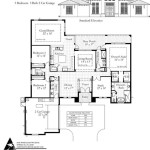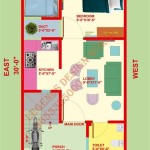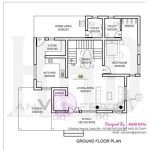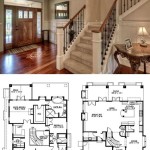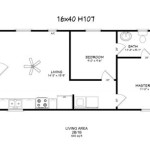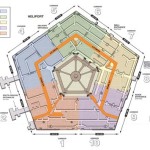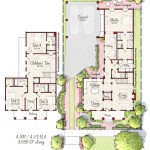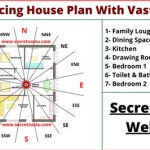House Plans With Bonus Room Upstairs: Maximizing Space and Versatility
House plans incorporating a bonus room upstairs are increasingly popular among homeowners seeking flexible living spaces. These plans offer the functional advantages of traditional layouts while adding the significant benefit of an adaptable room that can be tailored to diverse needs. A bonus room, typically situated above a garage or other living area, provides extra square footage that can be transformed into anything from a home office to a recreational space, effectively enhancing the overall value and appeal of the property.
The location of the bonus room, usually on the upper level, provides a degree of separation from the main living areas. This separation is particularly advantageous when the room is used as a home theater, a playroom for children, or a guest suite. The slightly removed location helps to minimize noise transfer and create a more private and comfortable environment. Careful consideration of the structural design, including soundproofing measures, can further enhance the isolation of the bonus room.
Selecting a house plan with a bonus room upstairs necessitates careful planning and evaluation. Prospective homeowners should consider their current and anticipated needs, the size and layout of the bonus room, and the overall design of the house. This article will delve into key aspects of house plans featuring an upstairs bonus room, providing insights into their benefits, design considerations, and potential uses.
Key Benefits of a Bonus Room Upstairs
One of the primary benefits of having a bonus room upstairs is the flexibility it offers. Unlike rooms with predetermined functions, a bonus room can be adapted to meet a variety of needs throughout the homeowner's life. It can serve as a nursery for young children, a playroom as they grow, a study area during their school years, and a recreation room for teenagers. As the children move out, the space can be repurposed again, perhaps as a home office, a library, or a guest suite. This adaptability ensures that the space remains valuable and relevant over time, making it a worthwhile investment.
Another advantage is the increased home value. A house with a bonus room often commands a higher price in the real estate market compared to similar houses without this feature. The extra square footage and the potential for customization are highly attractive to potential buyers. The bonus room effectively adds to the livable space of the house, enhancing its overall appeal and marketability. The investment in a house plan with a bonus room can yield significant returns when the time comes to sell the property.
Furthermore, a bonus room can provide a distinct separation between different activities within the home. A dedicated workspace upstairs can offer a quiet and productive environment, away from the distractions of the main living areas. This separation is particularly beneficial for individuals who work from home or require a space for focused study. Similarly, a playroom located upstairs can help to contain the mess and noise associated with children's activities, preventing them from disrupting other areas of the house. The zoning that a bonus room allows ensures that different members of the household can pursue their activities without disturbing each other.
Design Considerations for Upstairs Bonus Rooms
Designing a bonus room upstairs requires careful consideration of several factors to maximize its functionality and aesthetic appeal. One crucial aspect is accessibility. The staircase leading to the bonus room should be conveniently located and designed to comply with building codes. The width and rise of the steps should be comfortable and safe, particularly for children and elderly individuals. Adequate lighting should be provided along the staircase to ensure visibility and prevent accidents. Ramps may be necessary for accessibility if required.
Another important consideration is natural light. Bonus rooms often have limited window space due to their location above a garage or other structure. Therefore, it is essential to maximize the amount of natural light that enters the room. Skylights can be an excellent solution for bringing in light from above, while dormer windows can provide both light and ventilation. The placement and size of windows should be carefully planned to optimize natural light exposure and minimize glare. The orientation of the house will also contribute to the amount and quality of natural light. South-facing windows will provide a lot of sunlight while north-facing windows will provide more diffuse light.
Insulation and soundproofing are also critical factors to consider. Because bonus rooms are often located above unheated spaces, such as garages, proper insulation is essential to maintain a comfortable temperature. Adequate insulation in the walls, ceiling, and floor will help to prevent heat loss in the winter and heat gain in the summer, reducing energy costs and improving comfort. Soundproofing measures, such as installing sound-dampening materials in the walls and ceiling, are also important, especially if the bonus room is used as a home theater or music room. Resilient channels can isolate the drywall from the framing members, preventing sounds from traveling through the structure. Soundproof doors and windows can also help to decrease any outside noise.
Furthermore, electrical and plumbing considerations play a significant role in the design process. The electrical wiring should be adequate to support the intended use of the room, including lighting, appliances, and electronic equipment. Sufficient outlets should be strategically placed throughout the room to accommodate various needs. If the bonus room is to be used as a guest suite or a recreation area, plumbing may be required for a bathroom or a wet bar. The placement of pipes and fixtures should be carefully planned to minimize noise and prevent water damage. Hiring a qualified electrician and plumber is essential to ensure that the electrical and plumbing systems are installed safely and correctly.
Finally, consider the aesthetic aspects of the bonus room. Choose flooring, paint colors, and furnishings that complement the overall style of the house and create a cohesive look. Light and neutral colors can make the room feel larger and more open, while darker colors can create a more cozy and intimate atmosphere. Consider the purpose of the room when selecting furniture and accessories. A home office will require a desk, chair, and storage cabinets, while a recreation room may need comfortable seating, a television, and game tables. The layout of the furniture should be carefully planned to maximize space and create a functional and inviting environment.
Potential Uses for an Upstairs Bonus Room
The versatility of an upstairs bonus room allows it to serve a multitude of purposes, adapting to the changing needs and preferences of the homeowner. One common use is as a home office. With the increasing prevalence of remote work, a dedicated workspace is becoming essential for many individuals. An upstairs bonus room can provide a quiet and productive environment away from the distractions of the main living areas. A comfortable desk, ergonomic chair, and adequate storage space can create an efficient and organized workspace. The room can also be equipped with high-speed internet access and other necessary technology to facilitate remote work.
Another popular use for a bonus room is as a recreation room or media room. This space can serve as a hub for entertainment and relaxation. Comfortable seating, a large-screen television, and a surround-sound system can create a home theater experience. Game tables, such as a pool table or a foosball table, can provide hours of entertainment for family and friends. The bonus room can also be used as a game room for video games, providing a dedicated space for children and adults to enjoy their favorite games. Proper soundproofing is essential to prevent noise from disturbing other areas of the house.
A bonus room can also be transformed into a guest suite, providing comfortable and private accommodations for visitors. A bed, dresser, and nightstand can create a cozy and inviting sleeping area. A private bathroom can add to the convenience and privacy of the guest suite. The bonus room can also be equipped with a small refrigerator and microwave to allow guests to prepare simple meals and snacks. The separation from the main living areas ensures that guests have their own private space to relax and unwind.
Furthermore, an upstairs bonus room can be used as a playroom for children. This space can provide a dedicated area for children to play, learn, and explore their creativity. Toys, games, and art supplies can be stored in the room, keeping them out of the main living areas. Soft flooring, such as carpeting or foam mats, can provide a safe and comfortable surface for children to play on. The bonus room can also be equipped with a television and video game console to provide entertainment for children of all ages. The separation from the main living areas helps to contain the mess and noise associated with children's activities.
Alternatively, a bonus room upstairs can serve as a hobby room or studio. Individuals who enjoy painting, sculpting, or other artistic pursuits can use the space as a dedicated studio. The room can be equipped with easels, worktables, and storage for art supplies. Good lighting is essential for creating a productive and inspiring workspace. Similarly, individuals who enjoy sewing, knitting, or other crafts can use the bonus room as a dedicated sewing or crafting room. The room can be equipped with sewing machines, cutting tables, and storage for fabrics and patterns. The bonus room provides a dedicated space for pursuing hobbies and creative interests, away from the distractions of everyday life.

Country Farmhouse Plan With Upstairs Den And Bonus Room 46376la Architectural Designs House Plans

Eye Catching New American House Plan With Bonus Room Above Garage 910004whd Architectural Designs Plans

Why A Bonus Room May Make Sense For Your Next Home

Bonus Room Above Garage Floor Plans Houseplans Blog Com

Two Story 5 Bedroom Traditional Southern Home With Upstairs Bonus Room Floor Plan House Plans How To

3 Bed Country House Plan With Bonus Room Above Garage 70641mk Architectural Designs Plans

O Extra Space 1 5 Story House Plans Blog Builderhouseplans Com

Two Story 4 Bedroom Country Home With Upstairs Bonus Room Floor Plan House Plans New

Bonus Room Above Garage Floor Plans Houseplans Blog Com

Two Story Country Home Plan With Optional Bonus Room Above Garage 60714nd Architectural Designs House Plans

